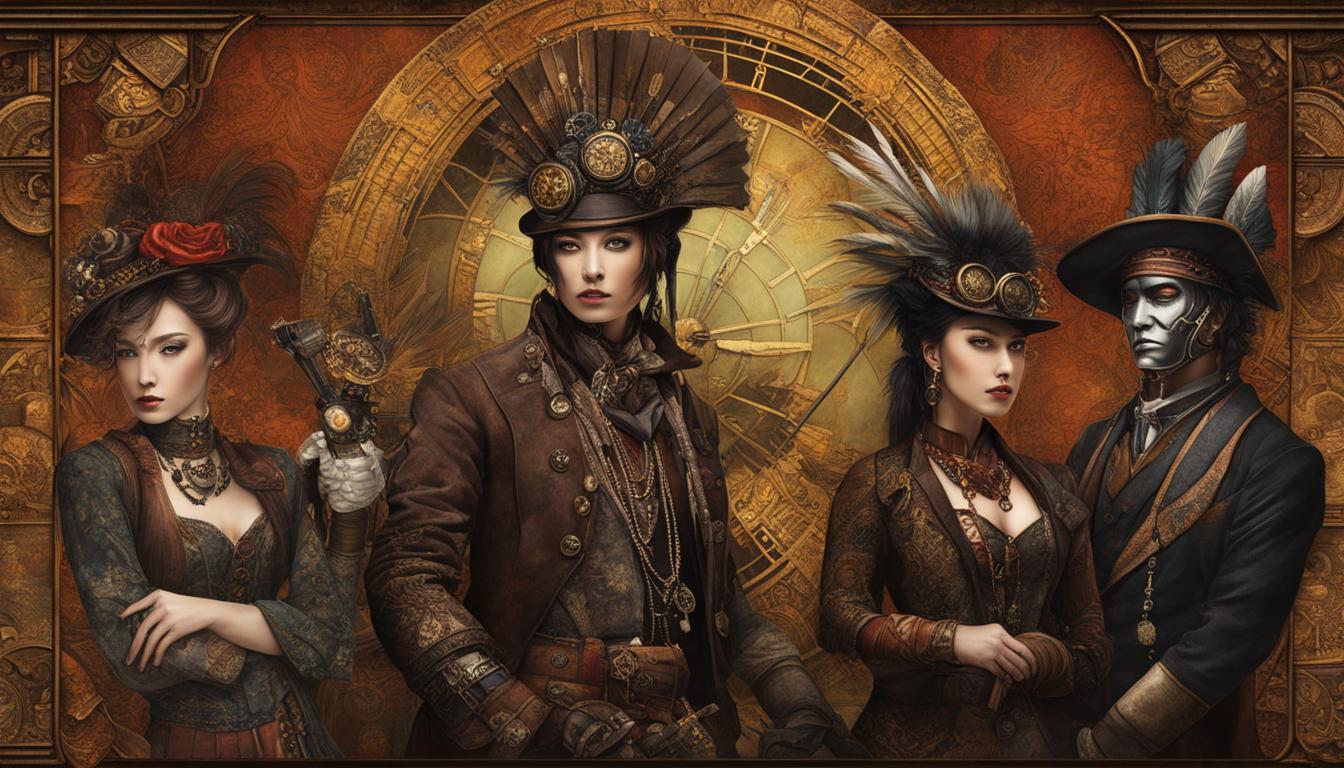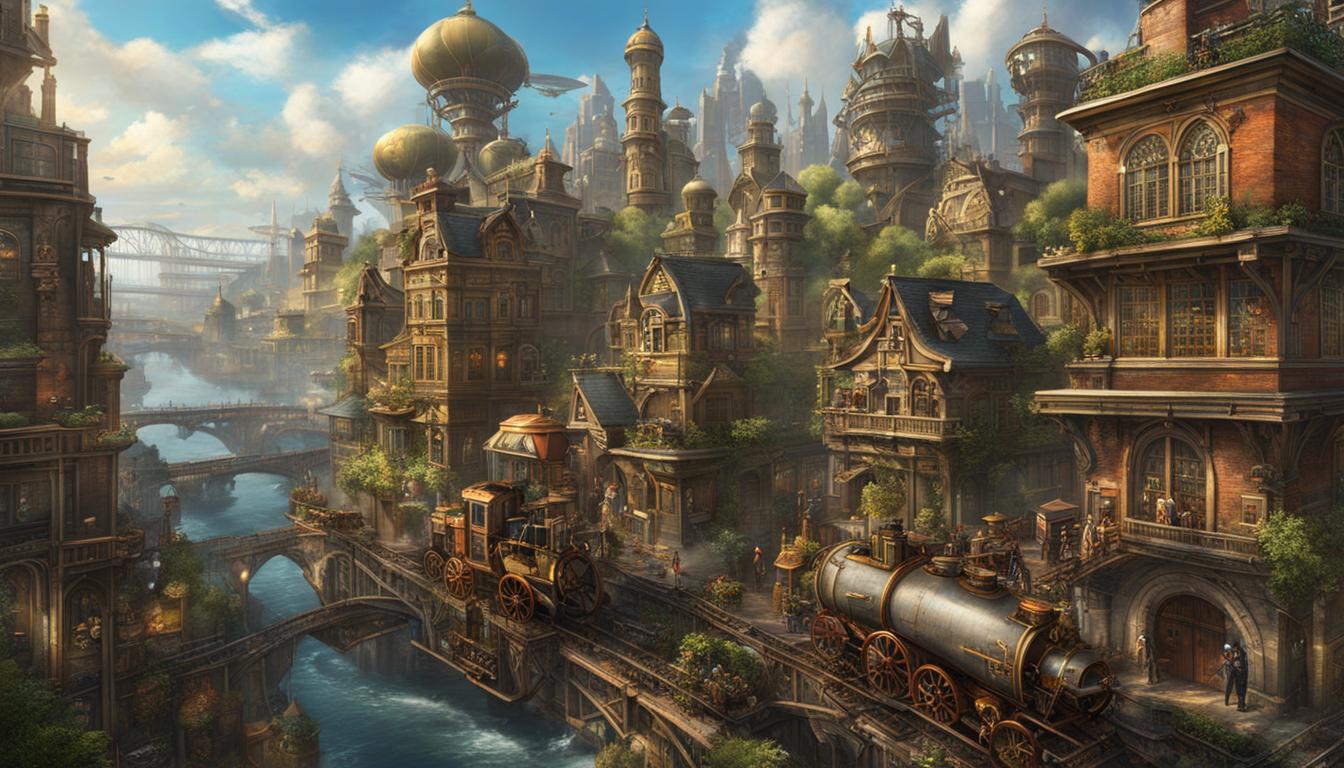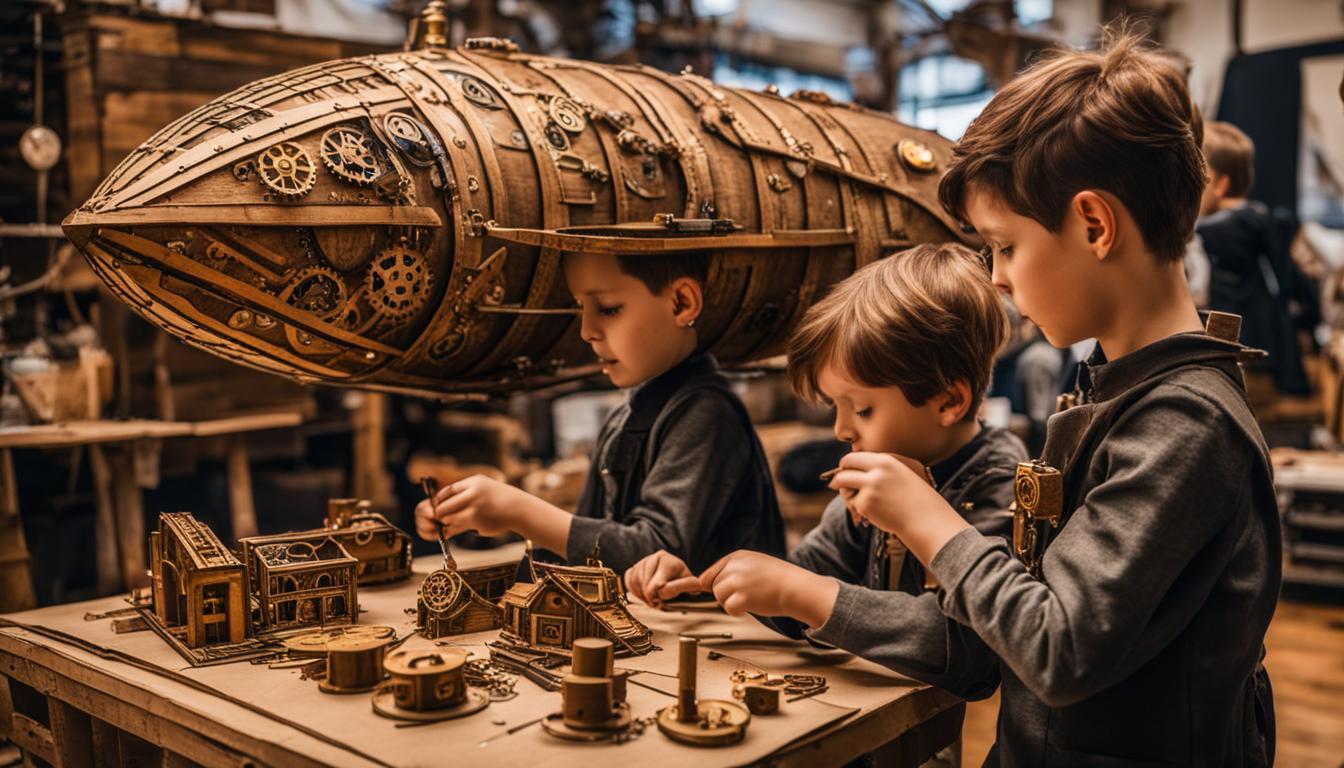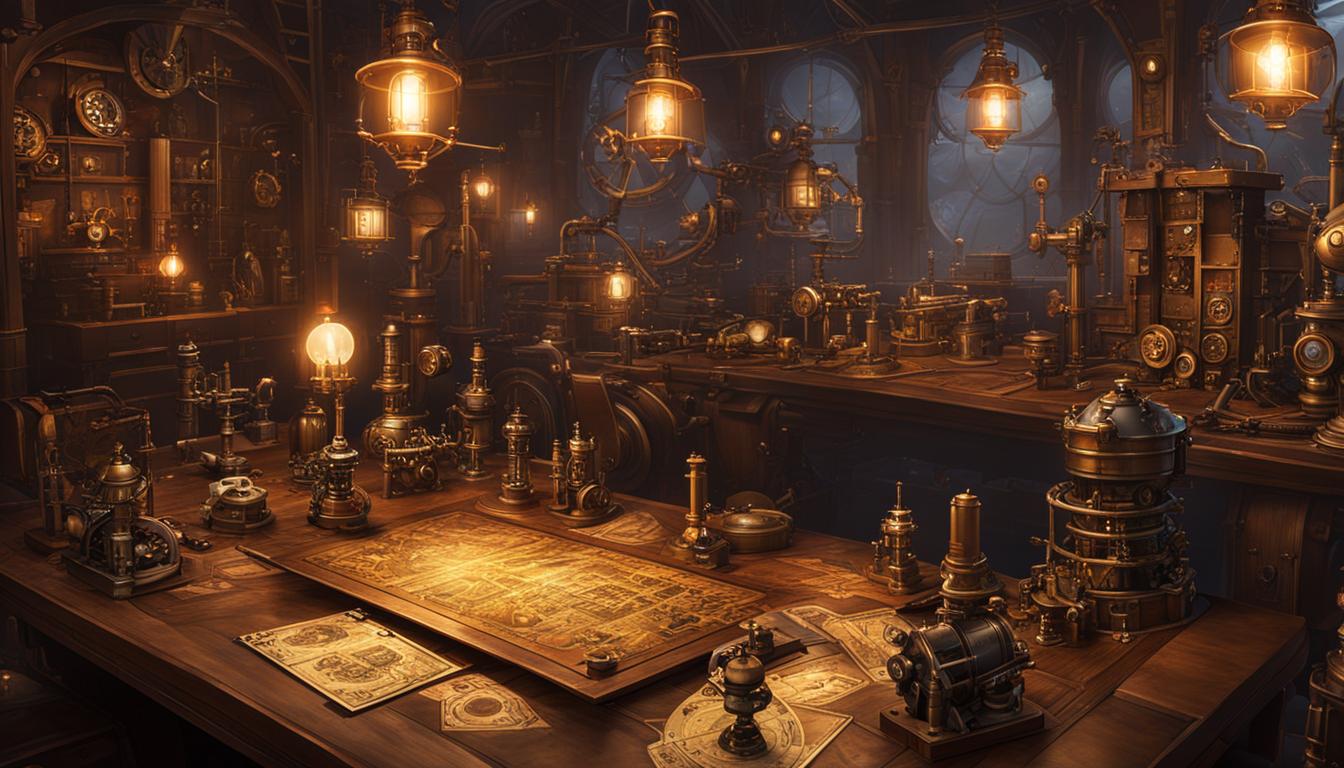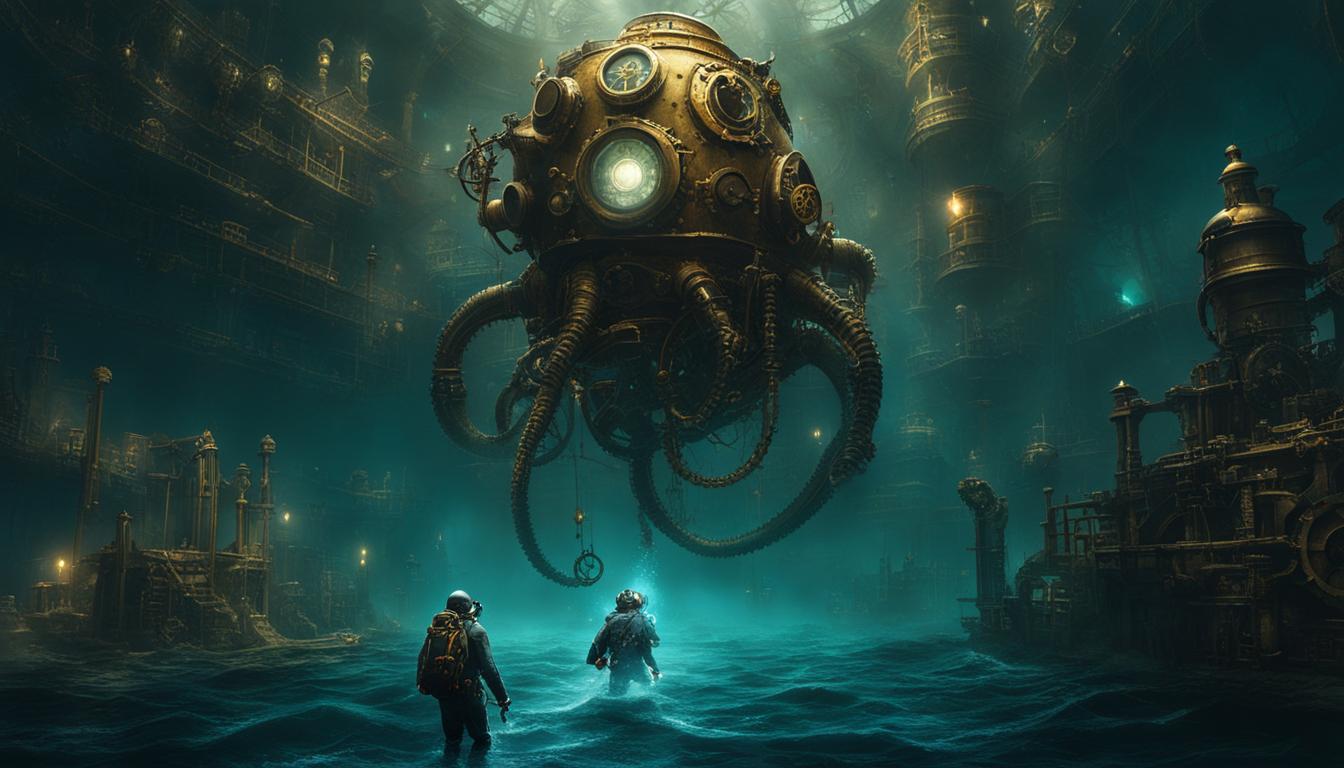Enter the captivating world of steampunk, a subgenre of science fiction that bridges the gap between the past and the future. Steeped in the cultural influences of the Victorian era, steampunk combines historical elements with imaginative futuristic technologies. Let’s embark on a journey to explore the origins and intricacies of this enigmatic subculture.
Steampunk takes inspiration from the industrial revolution of the 19th century, where steam-powered machinery reigned supreme. It offers a fresh perspective by presenting an alternative history where steam power remained the driving force behind technological advancements. Drawing from literary giants like H.G. Wells and Jules Verne, steampunk weaves together fantastical tales that captivate and transport readers to a bygone era.
This genre of science fiction embraces anachronistic technologies and inventions, allowing readers to indulge in the realm of what could have been. The fashion, culture, and architectural style of the Victorian era form the foundation of this subgenre, while influences from other genres such as fantasy, horror, and historical fiction add layers of complexity.
As the popularity of steampunk continues to soar, it has evolved beyond the confines of literature. Steampunk has become an artistic style, a clothing fashion, and a vibrant subculture that spans the globe. Its distinct visual aesthetic, characterized by the fusion of Victorian-era fashion and retrofuturistic machinery, has captivated the imaginations of enthusiasts worldwide.
So, grab your goggles and corsets as we delve deeper into the cultural origins of steampunk and unlock the secrets of its subgenres. Prepare to journey through time and witness the fusion of history and imagination in the world of steampunk.
Key Takeaways:
- Steampunk is a subgenre of science fiction that combines historical elements with imaginative futuristic technologies.
- It draws inspiration from the Victorian era and the works of authors like H.G. Wells and Jules Verne.
- Steampunk incorporates anachronistic technologies and inventions envisioned by people in the 19th century.
- The visual aesthetic of steampunk fuses Victorian-era fashion with retrofuturistic machinery.
- Steampunk has evolved into a global subculture, encompassing art, fashion, and community events.
The Visual Aesthetic of Steampunk
The visual aesthetic of steampunk is a captivating fusion of Victorian fashion and retrofuturistic machinery. Steampunk enthusiasts often embrace Victorian-inspired clothing, incorporating elements such as corsets, top hats, and goggles into their attire. But what truly sets steampunk fashion apart is the incorporation of open-faced clockwork, gears, hydraulics, and engines, giving an illusion of a world powered by steam and intricate mechanics.
Steampunk fashion embraces a color palette dominated by earthy tones like brown, rusted metal, and leather, often accented with hints of brass. This homage to the industrial age of the Victorian era creates an immersive experience, transporting enthusiasts and onlookers alike to a parallel universe where steam power reigns supreme.
The DIY Ethos in Steampunk
One of the defining characteristics of the steampunk subculture is its do-it-yourself (DIY) ethos. Steampunks take pride in their ability to create their own unique fashion pieces, accessories, and even weaponry. This resistance to mass production and standardized technology is a critique of modern consumerism.
The DIY culture within steampunk encourages craftsmanship and individuality. It invites enthusiasts to repurpose and combine everyday objects with vintage or futuristic elements, resulting in personalized and often whimsical creations. This emphasis on individual expression fuels the creativity and ingenuity that defines the steampunk aesthetic.
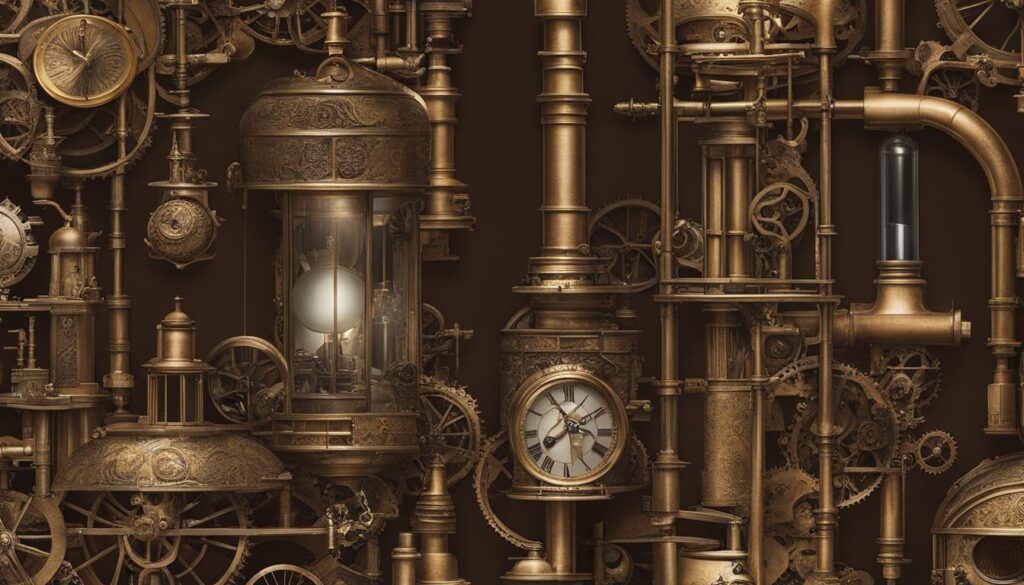
Steampunk Weaponry
Steampunk fashion extends beyond garments and accessories to include weaponry that is both functional and visually striking. Steampunk enthusiasts are known for designing and crafting unique weapons that blend old-world aesthetics with futuristic concepts.
“Armed with their steampunk weaponry, enthusiasts can embark on imagined adventures, ready to face imaginary foes in their alternate Victorian landscapes.”
From pistols with intricate clockwork mechanisms to ray guns that harness the power of steam, these weapons serve as both decorative elements and tokens of the steampunk subculture’s adventurous spirit.
| Steampunk Weapon | Description |
|---|---|
| Steam-powered cane gun | A walking cane that conceals a hidden firearm, perfect for the discreet steampunk adventurer. |
| Tesla coil gauntlet | A wrist-mounted device that harnesses the power of electricity, invoking the spirit of inventor Nikola Tesla. |
| Aether disruptor | A handheld weapon that emits beams of concentrated aether energy, capable of disrupting machinery and disorienting foes. |
Steampunk as a Global Subculture
Steampunk has transcended its literary origins to become a thriving global subculture that has captivated enthusiasts from all corners of the world. The internet has played a crucial role in the globalization of steampunk, enabling individuals to connect, collaborate, and share their passion for the genre. Through online communities, social media platforms, and dedicated websites, steampunk enthusiasts have found a space to showcase their creativity and engage with like-minded individuals.
One of the hallmarks of the steampunk subculture is the vibrant network of conventions and events that take place worldwide. These gatherings provide a platform for steampunks to come together, celebrate their shared interests, and showcase their elaborate costumes, unique artworks, and impressive designs. Steampunk conventions often feature panels, workshops, and performances that explore various aspects of the genre, fostering a sense of community and sparking inspiration among attendees.
The international steampunk community is incredibly diverse and inclusive, welcoming people of all backgrounds, ages, and identities. This diversity has fostered a rich exchange of ideas and a blending of cultural influences within the subculture. Steampunk enthusiasts from different parts of the world bring their unique perspectives, traditions, and aesthetics, creating a tapestry of creativity that is constantly evolving.
The globalization of steampunk has resulted in fascinating cross-pollinations of styles and interpretations. Steampunk enthusiasts from Japan, for example, have developed their own distinct subgenre known as “steampunk samurai,” which combines elements of traditional Japanese culture with steampunk aesthetics. This intersection of cultures adds depth and richness to the global steampunk community, making it an exciting and dynamic subculture that continues to thrive.
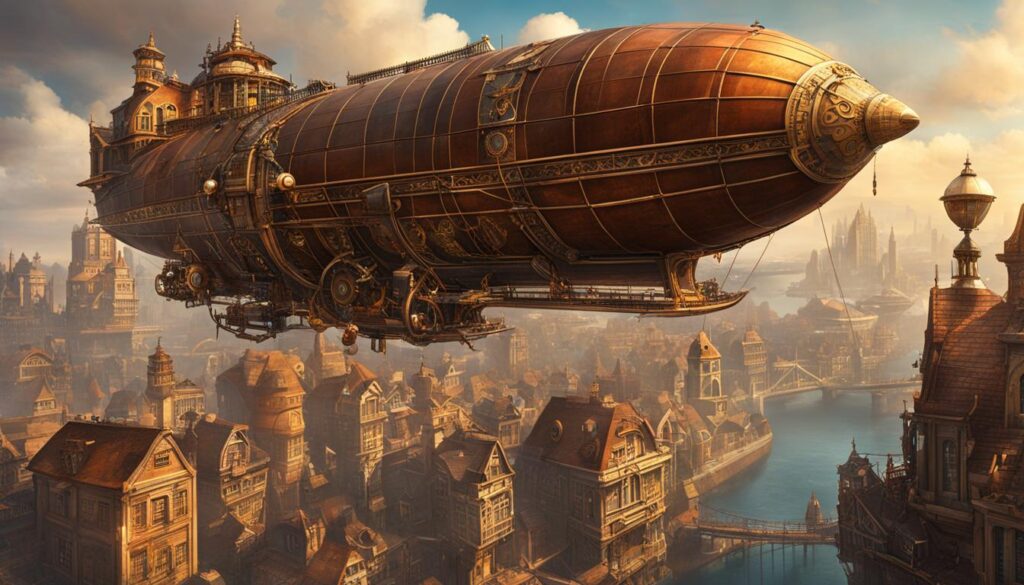
Table: Steampunk Conventions Around the World
| Convention Name | Location | Date |
|---|---|---|
| Steampunk World’s Fair | Piscataway, New Jersey, USA | May |
| Asylum Steampunk Festival | Lincoln, United Kingdom | August/September |
| Steamposium | Seattle, Washington, USA | October |
| Steampunk NZ Festival | Oamaru, New Zealand | June |
| Steampunk World Convention | Long Beach, California, USA | November |
Table: Steampunk conventions around the world showcasing the global reach and popularity of the subculture. From the United States to the United Kingdom, New Zealand to Japan, these conventions provide opportunities for steampunk enthusiasts to come together and celebrate their shared passion.
Conclusion
Steampunk, with its captivating blend of Victorian aesthetics and retrofuturistic elements, has evolved into a global phenomenon that encompasses various forms of expression. From literature to art, fashion to community events, steampunk provides a creative outlet for individuals to reimagine history and explore alternative futures.
This subculture’s DIY ethos and emphasis on craftsmanship not only reflect a desire for personalized technology but also serve as a critique of modern consumerism. Steampunks reject the homogenization of mass-produced goods and instead embrace the art of handmade creations, showcasing their ingenuity and individuality.
As we delve deeper into this captivating world, we discover a vibrant and interconnected steampunk community. Through the internet, enthusiasts from around the world connect, organize events, and exchange ideas. This globalization of steampunk has led to the blending of cultural influences, resulting in unique interpretations and combinations of the subculture’s aesthetics.
Steampunk continues to captivate and inspire enthusiasts worldwide, serving as a testament to the power of imagination. It allows us to transcend boundaries and envision a world where technology and history converge, offering a refreshing and intriguing escape from the ordinary.
FAQ
What is steampunk?
Steampunk is a subgenre of science fiction that incorporates retrofuturistic technology and aesthetics inspired by 19th-century industrial steam-powered machinery.
When did steampunk originate?
Steampunk has its origins in science fiction literature of the 19th century but has since expanded into an artistic style, clothing fashion, and subculture with global popularity.
What is the visual aesthetic of steampunk?
The visual aesthetic of steampunk is characterized by a fusion of Victorian-era fashion and retrofuturistic machinery. It includes elements such as corsets, top hats, goggles, and open-faced gears, hydraulics, and engines.
What is the DIY ethos in steampunk?
The DIY ethos is strong within the steampunk subculture, emphasizing personalized and handmade creations that resist the commercialization and homogenization of modern technology.
Is steampunk a global subculture?
Yes, steampunk has grown beyond its literary origins and has become a global subculture. The internet has played a significant role in the spread of steampunk, allowing enthusiasts from around the world to connect, organize events, and share their creations.
What happens at steampunk conventions and gatherings?
Steampunk conventions and gatherings attract thousands of participants who come together to showcase their costumes, artworks, and designs.

